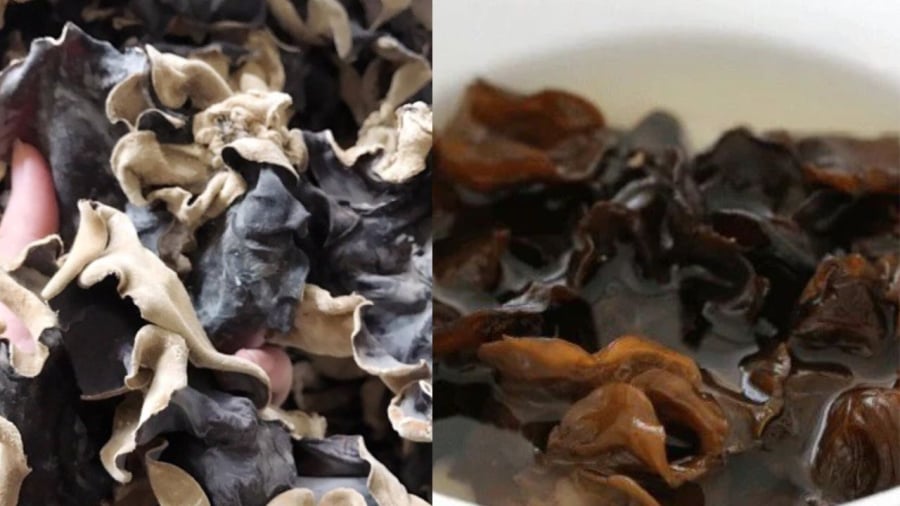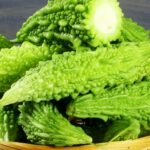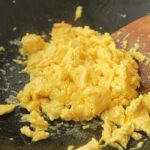In Vietnamese cuisine, wood ear mushrooms are a staple ingredient in many traditional dishes such as fried spring rolls, bamboo shoots soup, and crispy fungus. Also known as black fungus or cloud ear fungus, this edible mushroom must be dried before consumption. Fresh wood ear mushrooms, either plucked directly from the tree or harvested from the mushroom head, can be life-threatening.
This is because fresh wood ear mushrooms contain a natural toxin called morpholine, which is produced by the mushrooms as a defense mechanism. Morpholine is particularly sensitive to light, and consuming fresh mushrooms will lead to an increased intake of this toxin, resulting in itching. Due to its light-sensitive nature, exposing the mushrooms to sunlight will cause the toxin to break down and diminish. Hence, it is crucial to thoroughly sun-dry wood ear mushrooms before consumption, rather than eating them fresh.

Sun-drying is essential for preparing wood ear mushrooms for consumption
Morpholine toxin can pose a significant health risk. Ingesting large amounts of it can lead to itching, nausea, allergies, and, in severe cases, serious toxic reactions. While the toxicity of morpholine is not as potent as the toxins found in cassava or fresh bamboo shoots, consuming high quantities can still result in dangerous consequences such as skin necrosis and itching, requiring extensive treatment.
Therefore, it is imperative not to consume wood ear mushrooms without properly drying them first. If you have wood ear mushrooms growing on a tree, make sure to sun-dry them thoroughly in strong sunlight.
Before consuming wood ear mushrooms, it is recommended to soak them in water to rehydrate and further eliminate any residual morpholine that may have remained after the drying process. Rinsing the mushrooms ensures that any remaining toxins are washed away. Avoid soaking the mushrooms in boiling water to speed up the rehydration process. Instead, use cold water, as it allows the mushrooms to rehydrate gradually and more effectively release any residual morpholine.
Wood ear mushrooms are not only delicious but also offer numerous health benefits. They are considered a natural aspirin alternative due to their blood-thinning properties. However, individuals taking blood-thinning medication should consume this mushroom in moderation to prevent excessive blood thinning, which could lead to hazardous consequences. Additionally, those with existing blood thinning conditions should exercise caution when consuming this mushroom.
Wood ear mushrooms are also known to boost the immune system due to their polysaccharide content. Consuming these mushrooms can help alleviate constipation and effectively prevent cardiovascular diseases. The darker the mushroom, the richer it is in vitamin K, calcium, and other essential nutrients that help prevent blood clots. The sticky substance in wood ear mushrooms aids in eliminating digestive tract impurities, thereby cleansing the digestive system. Therefore, when choosing wood ear mushrooms, opt for the darker variety to maximize their nutritional benefits.
Tips for Selecting the Best Wood Ear Mushrooms
When purchasing wood ear mushrooms, bring them close to your nose and take a whiff. Fresh mushrooms will not have a musty or moldy odor. Avoid mushrooms with strange smells.
Steer clear of mushrooms with unusual colors, such as red or black spots. Typically, you will find only two varieties: dark-colored and light-colored (referred to as white, but not pure white, rather a lighter shade than the dark ones).
Choose mushrooms with thicker, larger frills, as they will provide a crunchier texture compared to thinner ones. Avoid picking mushrooms that look shriveled and ugly, as they tend to become soft and mushy.
Fresh wood ear mushrooms should be supple and spring back when pinched, indicating their good quality.
The texture of the mushrooms should feel rough and dry to the touch, signifying that they have been adequately dried.



































